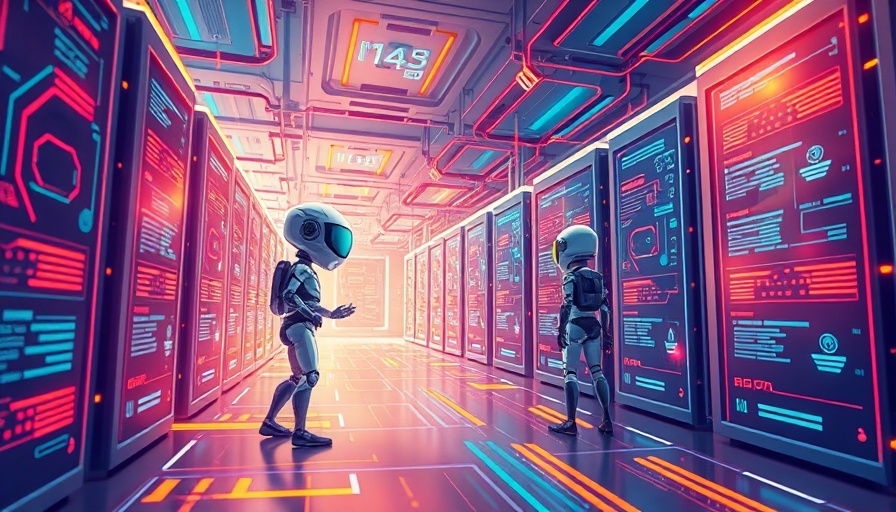
The Future of Work: AI Agents Transform Business Operations
The landscape of work is rapidly evolving as NVIDIA has unveiled its revolutionary AI-Q Blueprint designed to connect AI agents, creating an innovative digital workforce. These AI agents are not merely tools; they are becoming integral members of the enterprise team, capable of automating complex tasks and solving intricate problems through smarter collaboration.
Unlocking Efficiency with AI-Q
NVIDIA's AI-Q Blueprint aims to streamline business operations by offering a foundational framework that industries such as finance and sports can utilize. The integration of NVIDIA's accelerated computing, along with tools like the Llama Nemotron reasoning models, facilitates the development of agent-driven systems that efficiently handle complex tasks with remarkable speed and accuracy.
Embracing Digital Workforce: The AgentIQ Toolkit
Central to the AI-Q initiative is the AgentIQ toolkit, which provides an open-source library for developing multi-agent systems. This toolkit enhances connectivity between AI agents, enabling them to collaborate seamlessly while drawing valuable insights from enterprise data. By breaking down agentic silos, organizations can enhance productivity and responsiveness, effectively transforming how teams manage and execute tasks.
Real-World Applications: From Finance to AI Training
Some organizations are already reaping the benefits of integrating AI agents. For instance, Visa utilizes AI to automate cybersecurity processes, significantly reducing response times for phishing analyses. Other enterprises can adopt the AI-Q Blueprint to modernize their operations, leveraging the transparency and traceability enabled by the AgentIQ toolkit to monitor performance and tackle inefficiencies head-on.
Key Features of AgentIQ: Optimizing Performance Across Industries
The versatility of the AgentIQ toolkit allows for integration with widely used platforms, such as Salesforce and Microsoft's Azure AI Agent Service. This flexibility enables developers to enhance existing systems without substantial overhauls, providing a smooth transition to advanced AI solutions tailored to industry-specific workflows.
Future Predictions: The Act of Collaboration Among AI
As AI agents evolve, the notion of teamwork will extend beyond human interactions to include these digital assistants. AI-Q is setting the stage for a future where AI agents collaborate not only with each other but also with human employees to maximize operational effectiveness. This symbiotic relationship has the potential to redefine what it means to work in an increasingly automated world.
Challenges and Opportunities for the AI Workforce
While the prospects of a digital workforce appear promising, it is crucial for organizations to understand the challenges that come with integrating AI technologies. Issues such as data security, operational transparency, and workforce adaptation must be addressed to secure a smooth transition. Nevertheless, the opportunities for increased efficiency and innovation far outweigh these challenges. By prioritizing collaborative strategies, companies can set themselves for success in the rapidly changing workplace landscape.
Conclusion: Embrace the AI Transformation
As AI continues to reshape the future of work, understanding the implications of tools like NVIDIA's AI-Q blueprint can give organizations a competitive edge. Adopting AI agents not only enhances current workflows but also paves the way for exciting developments in business operations. Now is the time for enterprises to explore how they can leverage AI technologies to foster innovation and efficiency in their teams. The journey toward a fully-integrated AI workforce is just beginning, and those who embrace this change will lead the way into the future.
 Add Row
Add Row  Add
Add 




Write A Comment